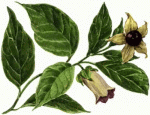Botany
|
23 april 2014 13:48:38 |
| Histone acetylation associated up-regulation of the cell wall related genes is involved in salt stress induced maize root swelling (BMC Plant Biology) |
|
Tweet Background:
Salt stress usually causes crop growth inhibition and yield decrease. Epigenetic regulation is involved in plant responses to environmental stimuli. The epigenetic regulation of the cell wall related genes associated with the salt-induced cellular response is still little known. This study aimed to analyze cell morphological alterations in maize roots as a consequence of excess salinity in relation to the transcriptional and epigenetic regulation of the cell wall related protein genes.
Results:
In this study, maize seedling roots got shorter and displayed swelling after exposure to 200 mM NaCl for 48 h and 96 h. Cytological observation showed that the growth inhibition of maize roots was due to the reduction in meristematic zone cell division activity and elongation zone cell production. The enlargement of the stele tissue and cortex cells contributed to root swelling in the elongation zone. The cell wall is thought to be the major control point for cell enlargement. Cell wall related proteins include xyloglucan endotransglucosylase (XET), expansins (EXP), and the plasma membrane proton pump (MHA). RT-PCR results displayed an up-regulation of cell wall related ZmEXPA1, ZmEXPA3, ZmEXPA5, ZmEXPB1, ZmEXPB2 and ZmXET1 genes and the down-regulation of cell wall related ZmEXPB4 and ZmMHA genes as the duration of exposure was increased. Histone acetylation is regulated by HATs, which are often correlated with gene activation. The expression of histone acetyltransferase genes ZmHATB and ZmGCN5 was increased after 200 mM NaCl treatment, accompanied by an increase in the global acetylation levels of histones H3K9 and H4K5. ChIP experiment showed that the up-regulation of the ZmEXPB2 and ZmXET1 genes was associated with the elevated H3K9 acetylation levels on the promoter regions and coding regions of these two genes.
Conclusions:
These data suggested that the up-regulation of some cell wall related genes mediated cell enlargement to possibly mitigate the salinity-induced ionic toxicity, and different genes had specific function in response to salt stress. Histone modification as a mediator may contribute to rapid regulation of cell wall related gene expression, which reduces the damage of excess salinity to plants. |
| 123 viewsCategory: Botany |
 Starch biosynthetic genes and enzymes are expressed and active in the absence of starch accumulation in sugar beet tap-root (BMC Plant Biology) Starch biosynthetic genes and enzymes are expressed and active in the absence of starch accumulation in sugar beet tap-root (BMC Plant Biology)The Theobroma cacao B3 domain transcription factor TcLEC2 plays a duel role in control of embryo development and maturation (BMC Plant Biology) 
|
| blog comments powered by Disqus |
MyJournals.org
The latest issues of all your favorite science journals on one page
The latest issues of all your favorite science journals on one page



